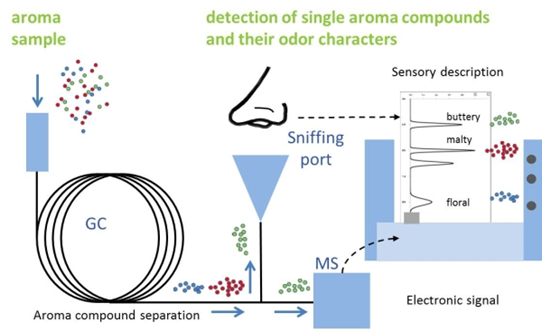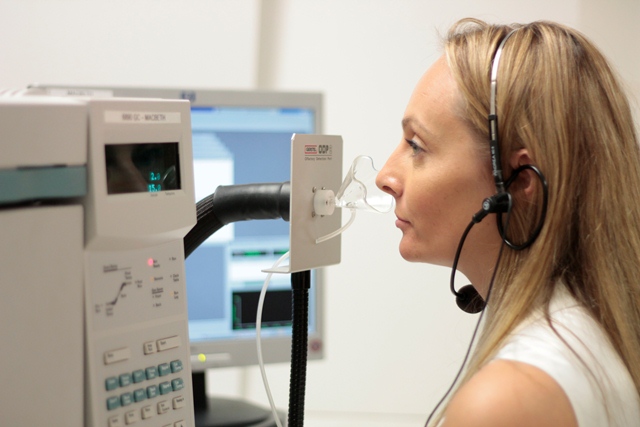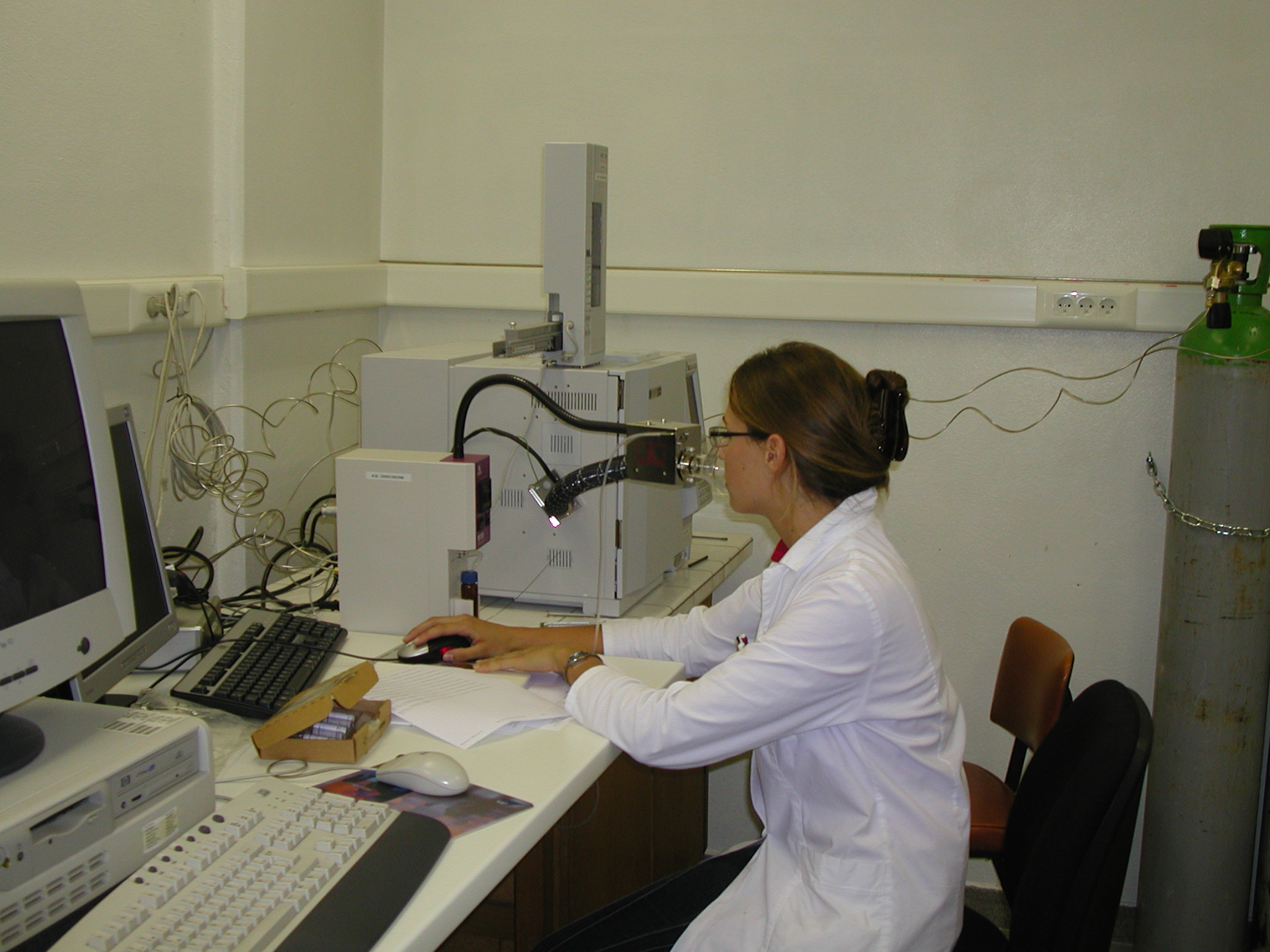Gas Chromatography Olfactometry
What is it?

Figure 1. Gas chromatography olfactometry diagram
GC-O consists in the combination of instrumental capacities and human nose and supplies both sensorial and chemical information.
One drawback of GC-O is that it is affected by subjectivity and inattention of the panelist. Indeed, panelist distraction can provoke important errors, in particular when odorous stimulus is short or weak.

Panelist sniffing
What can it be used for?
What can it NOT be used for?
This technique doesn’t provide any information about the odour concentration of the sample. Since it operates a separation of the sample in its single components, the olfactory properties of the sample as a whole are not considered. For this reason, data from GC-O analysis cannot provide information about the odour impact, and neither can it be used directly as input for dispersion modelling.

